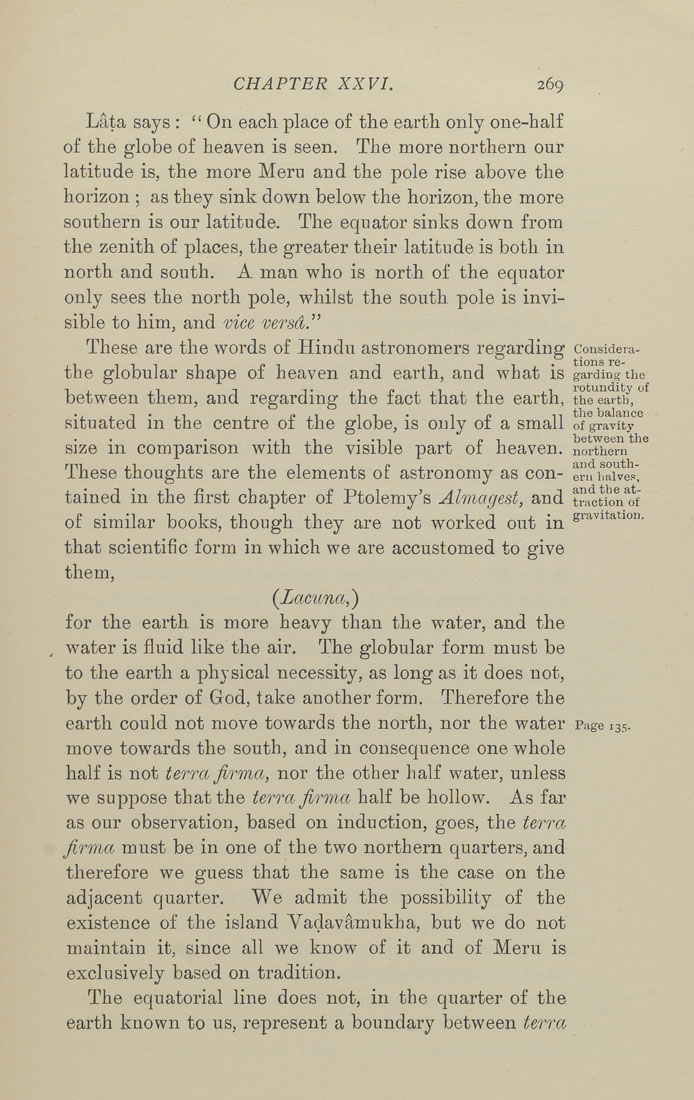Bīrūnī, Muḥammad ibn Aḥmad, Alberuni's India (v. 1)
(London : Kegan Paul, Trench, Trübner & Co., 1910.)
|
||
|
|
|
|
| Page 269 |

CHAPTER XXVI. 269 Lata says : " On each place of the earth only one-half of the globe of heaven is seen. The more northern our latitude is, the more Meru and the pole rise above the horizon ; as they sink down below the horizon, the more southern is our latitude. The equator sinks down from the zenith of places, the greater their latitude is both in north and south. A man who is north of the equator only sees the north pole, whilst the south pole is invi¬ sible to him, and vice versd." These are the words of Hindu astronomers regarding considera- the globular shape of heaven and earth, and what is gardingthe between them, and regarding the fact that the earth, the earth, situated in the centre of the globe, is only of a small of gravity • ji .1 ••11 , c ^ between the Size m comparison with the visible part ot heaven, northern These thoughts are the elements of astronomy as con- ernimrve.s tained in the first chapter of Ptolemy's Almagest, and traction^of of similar books, though they are not worked out in S'^*^^*'^*i°"- that scientific form in which we are accustomed to give them, (Lacttna,) for the earth is more heavy than the water, and the water is fluid like the air. The globular form must be to the earth a physical necessity, as long as it does not, by the order of God, take another form. Therefore the earth could not move towards the north, nor the water Page 135. move towards the south, and in consequence one whole half is not terra fir ma, nor the other half water, unless we suppose that the terra, fir ma half be hollow. As far as our observation, based on induction, goes, the terra firma must be in one of the two northern quarters, and therefore we guess that the same is the case on the adjacent quarter. We admit the possibility of the existence of the island Vadavamukha, but we do not maintain it, since all we know of it and of Meru is exclusively based on tradition. The equatorial line does not, in the quarter of the earth known to us, represent a boundary between terra |
| Page 269 |







